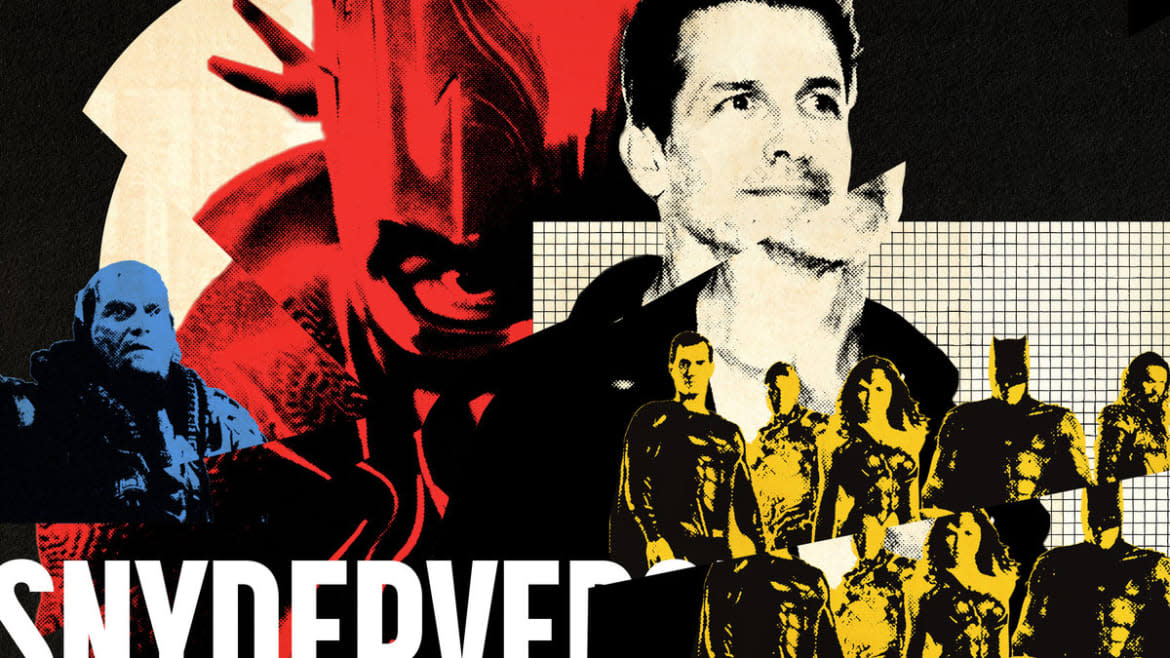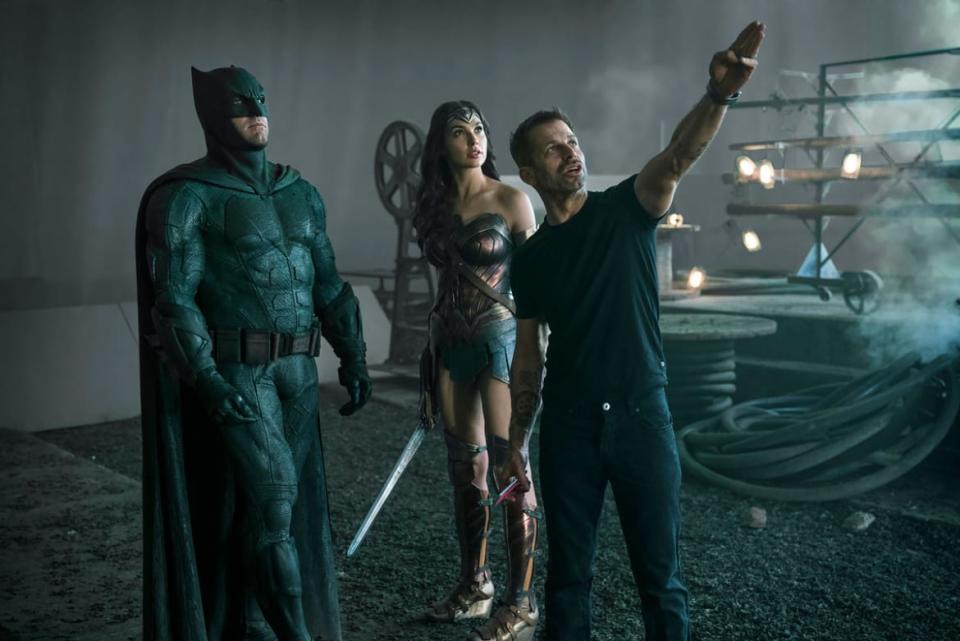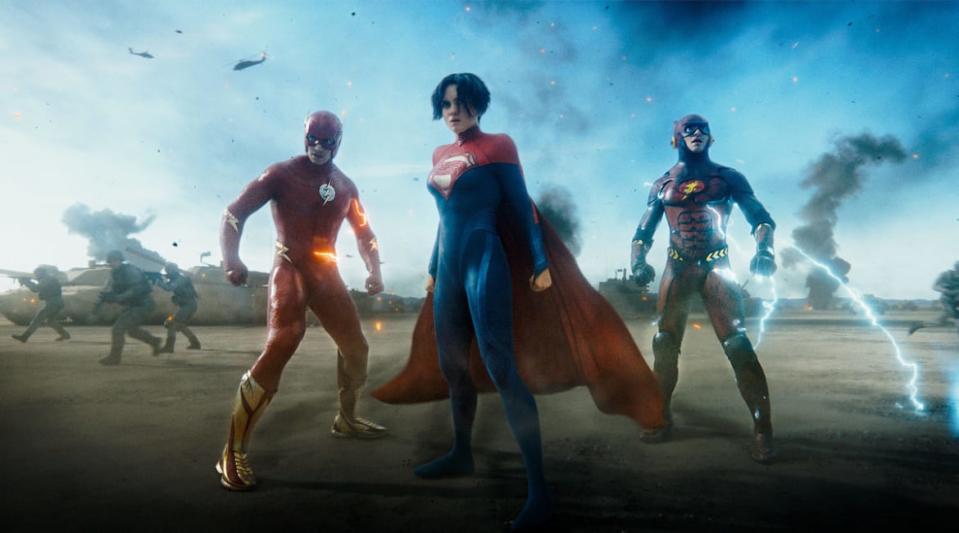‘The Flash’ Closes the Book on Zack Snyder’s DC Superhero Experiment

- Oops!Something went wrong.Please try again later.
- Oops!Something went wrong.Please try again later.
- Oops!Something went wrong.Please try again later.
- Oops!Something went wrong.Please try again later.
- Oops!Something went wrong.Please try again later.
- Oops!Something went wrong.Please try again later.
It’s around the midway mark of the long-awaited, long-delayed new DC superhero movie The Flash that Bruce Wayne, a.k.a. Batman, attempts to explain the complicated sci-fi hooey that's swallowed him and the film whole. You see, by going back in time and changing things, Barry Allen (Ezra Miller), a.k.a. The Flash, has effectively rewritten the past, the present, and the future. It's why Wayne now looks like a seventysomething Michael Keaton instead of a fiftysomething Ben Affleck. The Flash has erased the status quo and created an entirely new one in its place.
For Barry, that’s a calamity. For the suits at Warner Bros., it looks more like an opportunity. Here, to the chagrin of the DC Extended Universe-faithful, is a chance to finally wipe clean the troubled mess the studio’s made for its flagship heroes, the most popular titans of DC comics lore.
Did we say mess? Them’s fighting words for the fervent fans. They’ve spent the better part of a decade marching, trolling, and persistently hashtagging for the revival of what they've come to call the SnyderVerse, the movie franchise of steroidal gods and monsters launched by Zack Snyder. In all likelihood, The Flash will not be the official final chapter in the crossover event the director began; its actual end will probably be December’s Aquaman and The Lost Kingdom, which James Gunn, the Marvel defector recently hired to reboot the entire DC game plan, insists will function as a transition into a new take on this world and its beloved characters.
‘The Flash’ Can’t Outrun Ezra Miller’s Transgressions
And yet The Flash, finally in theaters this week after years of rewrites, setbacks, and controversies (many of them related to the litany of serious allegations against its star), has the occasional feel of a swansong. For all it looks to the future (and past) of DC movies, it also functions as a rather climactic romp through the sandbox Snyder built.
Snyder, of course, hasn’t actually been involved in a DC project for years, unless one counts the unlikely opportunity WB eventually granted him: finishing his own fabled cut of Justice League. (By now, the various twists and turns of that saga, marked by professional conflict and great personal tragedy, have been well documented, by The Daily Beast and elsewhere.) But in ways big and small, Snyder’s vision has persisted across the movies made in the wake of his departure. It’s there in the continued involvement of the actors he cast. And it’s present in the general look, if not always the feel, of the movies themselves, which have continued to follow his lead in the splash-panel action department, even as they've deviated from his often self-serious approach to the characters.
The Flash begins fully in Snyder World, with an opening set piece that mostly adheres to the stylistic template the director set while offering what counts as one of the last chances to see his versions of the heroes in action. Is this the final appearance of Batfleck? It’s reportedly unknown, at present, whether it’ll be him or Keaton who shows up in the second Aquaman. Even with some members missing (and one shuttled off to a jokey post-credits scene), the opening sequence has the vibe of a last hurrah for the Justice League, a quick farewell tour before The Flash scrambles the continuity.

Once the time-travel shenanigans begin in earnest, director Andy Muschietti continues to operate within the general house style Snyder set. That means CGI that looks striking in tableau, rubbery and unconvincing in wham-bang motion. The Flash’s particular power set plays, thankfully, to the former; we got a lot of Snyderian slow-motion, a signature of the filmmaker's work since he was adapting Frank Miller comics about suicidally courageous Spartan warriors.
The Flash’s climax, meanwhile, is a Man of Steel redux, both narratively and stylistically: a lot of weightless digital action figures racing across ashen landscapes and crashing into each other. For those who have always wondered what Tim Burton’s Batman would look like at Snyder-speed, The Flash makes that discomforting hypothetical a reality. It's weird to see this stuff scored to Danny Elfman’s iconic Batman theme, as opposed to the crunching rock chords Snyder often favored.
Literally returning to the events of 2013’s Man of Steel—the planetary invasion by Michael Shannon’s General Zod, this time unencumbered by the intervention of one Kal-El—really underlines the sense that The Flash is tying something of a bow on the Snyder years. There’s a certain dramatic symmetry to that time-travel development: One complete decade later, the franchise has come full circle, closing the loop of its overarching story arc by going back to where it began. The Flash may not actually wrap up any of the arcs of these characters, but it creates at least the impression of closure at SnyderVerse’s ground zero.
The DC Cinematic Universe Can’t Outrun Its Casting Curse
It also arguably completes, with the finish line in sight, the tonal course-correction Warner Bros. has been fumbling for since the dark days of Batman v Superman. If Snyder’s aesthetic approach to this intellectual property has stubbornly persisted via every desaturated slugfest, his singularly grim take on Superman and friends has been under construction for years. The lighter vibes of the Wonder Woman, Aquaman, and Shazam movies, plus the Harley Quinn-led Birds of Prey, all felt studio-mandated—a deliberate move away from the poker-faced grandiosity of his initial trio of DC superhero pictures. That clash of sensibilities reached its nadir, of course, with the 2017 theatrical cut of Justice League, which attempted to mix the oil of Snyder’s apocalyptic bombast with the water of Joss Whedon’s Marvel-honed sitcom quip. In an odd way, The Flash achieves what that compromised blockbuster couldn’t: a synthesis of light and dark.
That’s emblematic of a blockbuster that's fundamentally transitional, with feet firmly planted in different eras of franchise history. If The Flash feels like a last gasp of the SnyderVerse, that’s because it rather explicitly takes stock of what this world offers, then points to a different way forward. When Gunn describes the movie as the beginning of something new, he’s talking about the possibilities opened up in the final act, as Barry Allen gets a glimpse into a whole constellation of alternate realities. Wherever DC movies go from here, you can bet they’ll use the narrative excuse of the multiverse as a way to get there.
Of course, it’s possible The Lost Kingdom will serve even more directly as a farewell to the SnyderVerse, genuinely tying up all the loose ends left dangling on the cusp of a full reboot. More likely, given that it was developed before Gunn took over, the film will function as an inconclusive conclusion, like a season finale shot before the showrunners learned that their show had been canceled.

But would a non-ending be such a bad way for this flawed, periodically rousing chapter of superhero cinema to end? It would certainly be in keeping with the forever horizon of comic books, continuing for decades with no ultimate destination in mind. And it would square, in a way, with Snyder’s own vision for the franchise. Remember, the man himself punted on the opportunity to put a punctuation on his time in the DC trenches: In what could either be blind optimism or a defiant rejection of the very concept of closing the book on this story, Snyder shot a Justice League epilogue that teased a dystopian plotline we’ll likely never see resolved, a cliffhanger destined to hang forever. Maybe there’s something hopeful in that ellipsis, a dream tomorrow for the defenders of this story, fictional and otherwise. In some other dimension, in some other timeline, the SnyderVerse rolls on, revived and thriving.
Get the Daily Beast's biggest scoops and scandals delivered right to your inbox. Sign up now.
Stay informed and gain unlimited access to the Daily Beast's unmatched reporting. Subscribe now.

